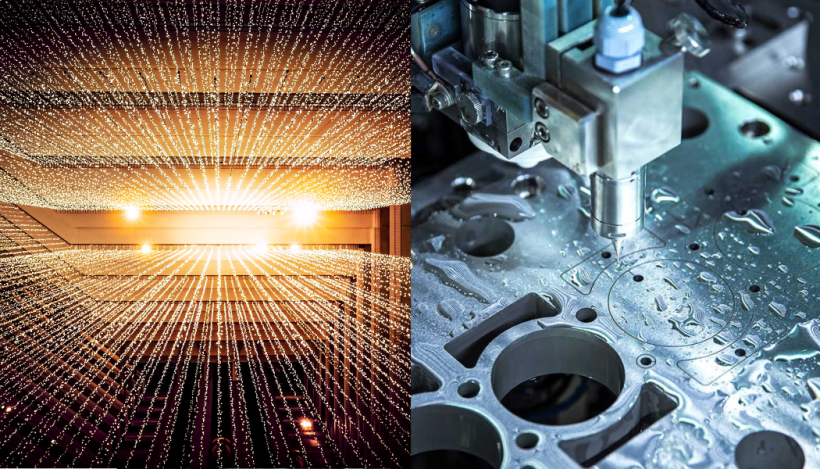In modern manufacturing, precision and efficiency are no longer luxuries—they are necessities. At the heart of this transformation lies CNC machine manufacturing, a field that has revolutionized how products are designed, built, and delivered. From aerospace to healthcare, CNC (Computer Numerical Control) machines have become the backbone of industries that demand accuracy, speed, and consistency.
What Is CNC Manufacturing?
CNC manufacturing is the process of using computer software to control the movement of factory tools and machinery. Instead of relying on manual operations, CNC machines use pre-programmed instructions to execute highly precise cuts, drills, and shaping processes. This technology allows manufacturers to produce complex parts with repeatable accuracy and minimal human intervention.
CNC machines can control a wide range of tools, including lathes, mills, grinders, and routers. These machines translate digital blueprints, often designed in CAD (Computer-Aided Design) software, into physical components with micron-level precision.
A Brief History
The roots of CNC manufacturing trace back to the 1940s and 1950s, when early numerical control machines used punched tape to automate tool movements. As computing technology advanced, the punched tape systems were replaced by digital controls, giving rise to the CNC systems we recognize today.
By the 1970s, CNC machines were widely adopted in industries requiring mass production and intricate detailing. Today, they are essential in industries as diverse as automotive, aerospace, defense, electronics, and medical devices.
Key Advantages of CNC Machines
-
Precision and Accuracy
CNC machines are capable of producing parts with tolerances as tight as a few microns. This is critical for industries like aerospace, where even the smallest deviation can impact safety and performance. -
Consistency
Once a program is created, the machine can replicate the same component hundreds or thousands of times without variation. -
Efficiency
CNC systems streamline production by reducing the need for manual labor. They can operate around the clock, increasing output while lowering operational costs. -
Flexibility
By simply adjusting the program, manufacturers can switch from producing one part to another with minimal downtime. This adaptability makes CNC manufacturing ideal for both prototyping and mass production. -
Safety
Automation reduces the risks associated with manual machining. Operators interact with the machine primarily through programming and supervision, minimizing direct exposure to potentially hazardous processes.
Applications Across Industries
-
Aerospace: Precision parts like turbine blades, engine components, and structural elements are manufactured using CNC machines.
-
Automotive: From gears and transmission systems to custom trims, CNC manufacturing ensures consistency in high-volume production.
-
Medical: Surgical instruments, implants, and prosthetics are produced with CNC technology to guarantee biocompatibility and exactness.
-
Electronics: CNC machining supports the fabrication of circuit boards, casings, and miniature components.
-
Consumer Goods: Products ranging from furniture to sports equipment benefit from the scalability and precision of CNC production.
The Role of Automation and AI
As industries demand even greater efficiency, CNC machines are increasingly integrated with automation systems and artificial intelligence. Robotic arms now load and unload parts, reducing downtime. AI-driven analytics help predict maintenance needs, ensuring machines operate smoothly and minimizing costly breakdowns.
Smart factories are taking CNC manufacturing a step further by connecting machines through the Industrial Internet of Things (IIoT). This connectivity enables real-time monitoring of production, energy use, and quality assurance, creating a seamless and data-driven manufacturing ecosystem.
Sustainability in CNC Manufacturing
Sustainability has become a priority across global manufacturing. CNC technology contributes by reducing material waste through optimized cutting paths and precise execution. Many modern CNC systems also incorporate energy-efficient designs, minimizing their environmental footprint.
Additionally, the ability to reuse digital designs allows for rapid prototyping without the need for excessive material consumption, supporting greener innovation.
Challenges in CNC Manufacturing
Despite its advantages, CNC manufacturing is not without challenges:
-
High Initial Investment: CNC machines are expensive, requiring significant capital for purchase, installation, and training.
-
Skilled Workforce: While machines reduce manual labor, they demand skilled operators and programmers capable of creating and managing complex code.
-
Maintenance: CNC systems must be regularly maintained to prevent downtime, which can be costly in high-volume production settings.
-
Cybersecurity Risks: As CNC machines become more connected, they face potential vulnerabilities to cyberattacks targeting proprietary designs and production data.
The Future of CNC Manufacturing
The future points toward greater integration of additive manufacturing (3D printing) with CNC processes. Hybrid systems are already emerging, allowing manufacturers to combine the speed of 3D printing with the precision of CNC machining.
Advancements in software, particularly cloud-based design and AI-powered optimization, will further streamline workflows. We can expect CNC machines to become more autonomous, capable of self-adjusting in real-time to maintain accuracy and efficiency.
Moreover, as global industries push for sustainable solutions, CNC technology will play a pivotal role in reducing waste, extending product life cycles, and enabling innovative materials.
Conclusion
CNC machine manufacturing represents the intersection of technology, precision, and progress. It has transformed traditional industries and opened doors to innovations that were once thought impossible.
As we move deeper into an era defined by automation and digital transformation, CNC machines will remain indispensable. They not only shape materials but also shape the future of global manufacturing. For businesses seeking competitiveness, reliability, and innovation, CNC manufacturing is not just an option—it’s a necessity.

